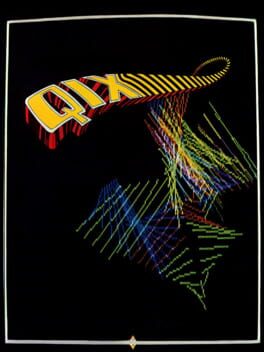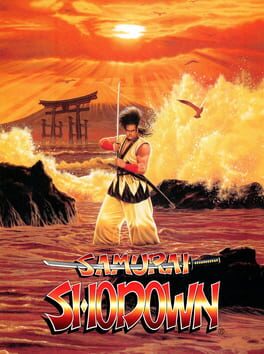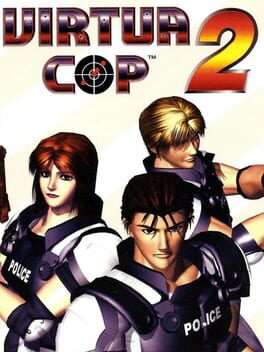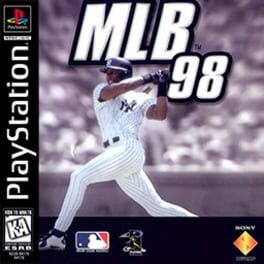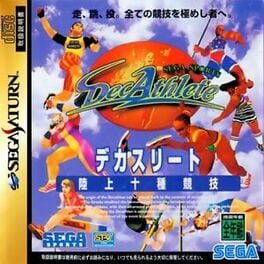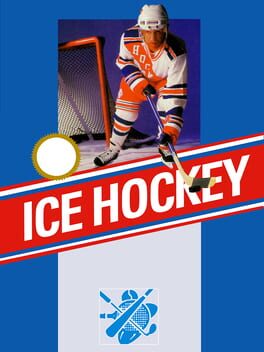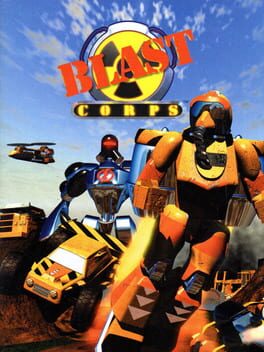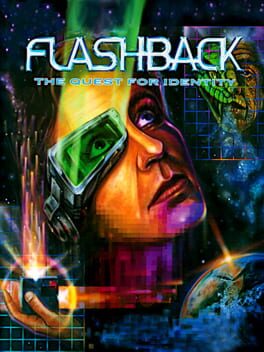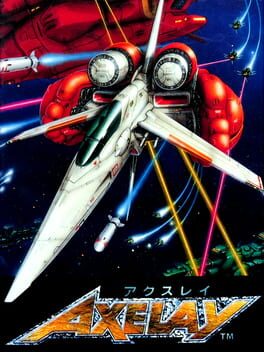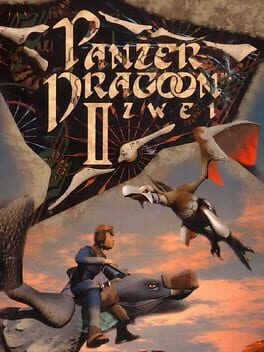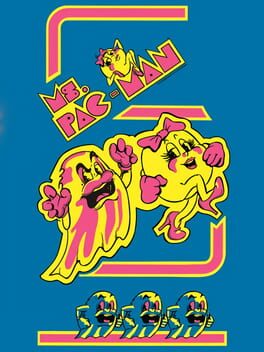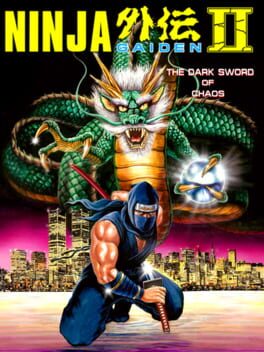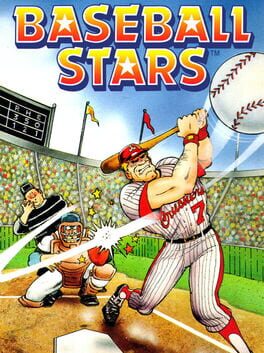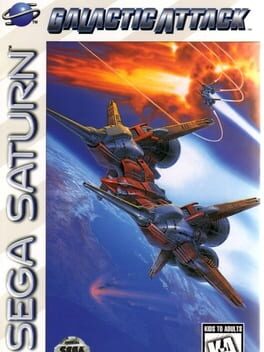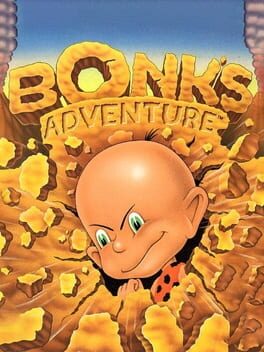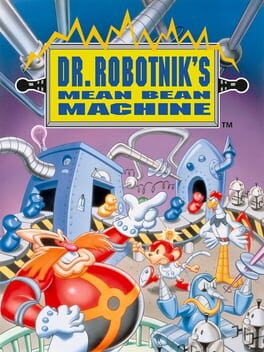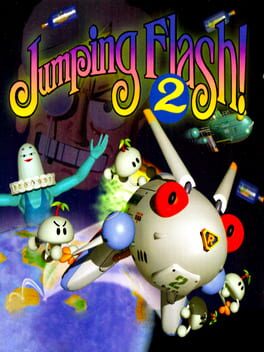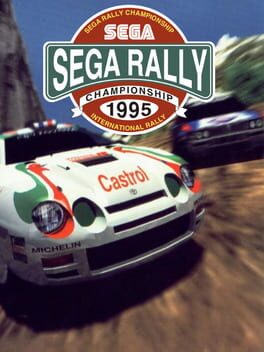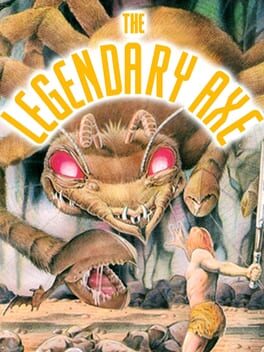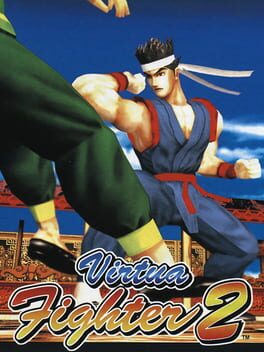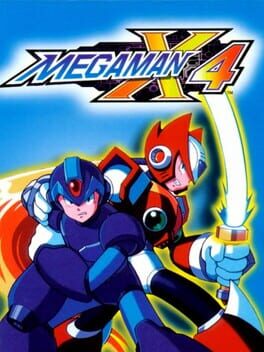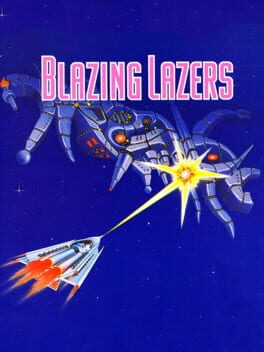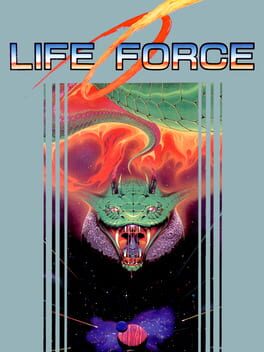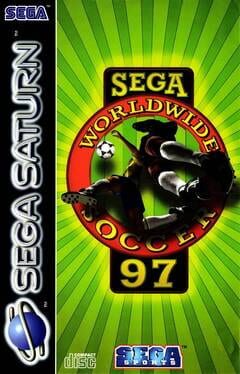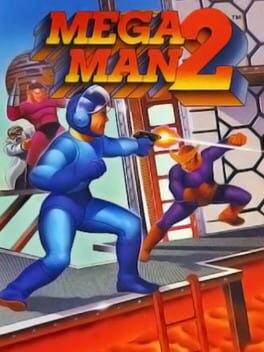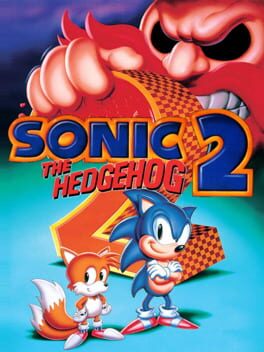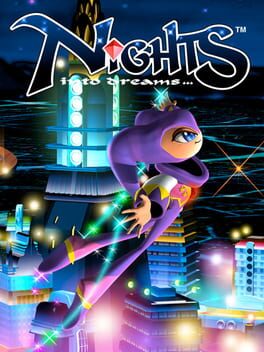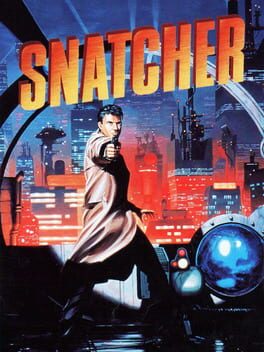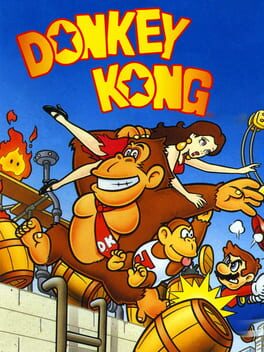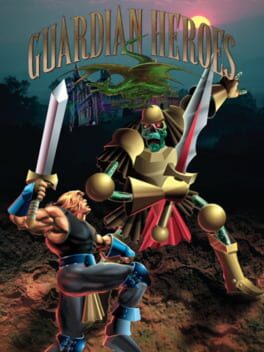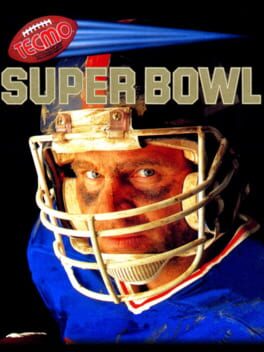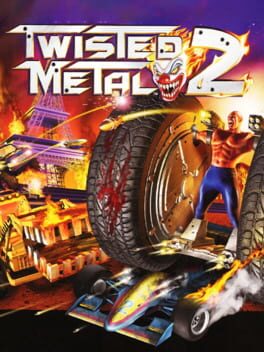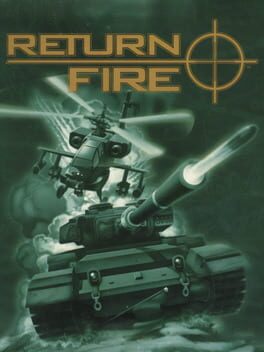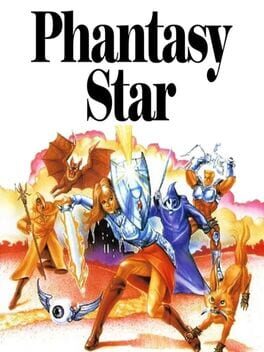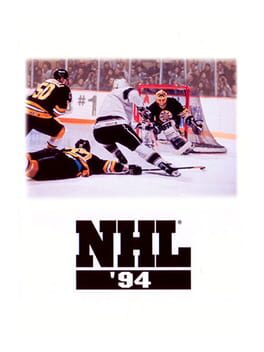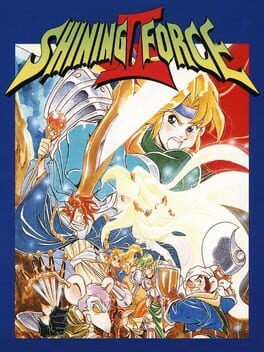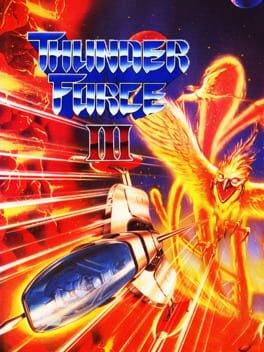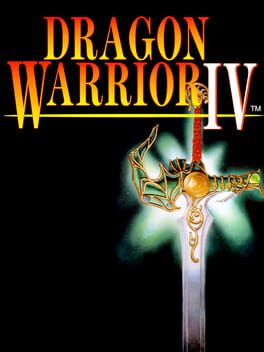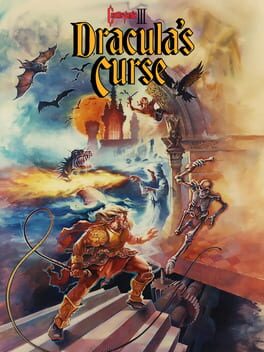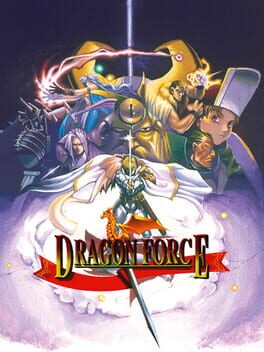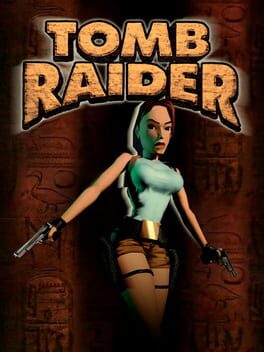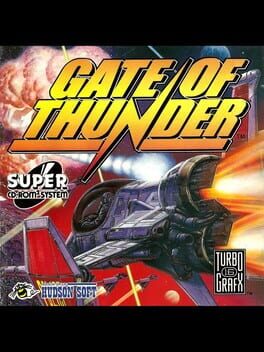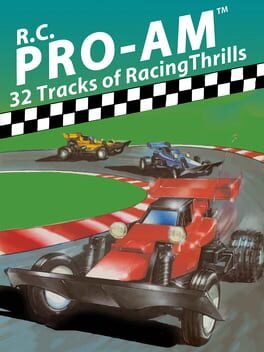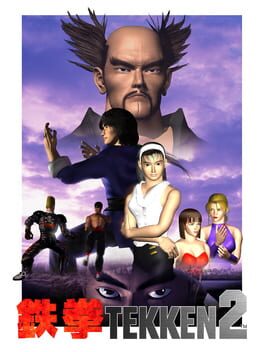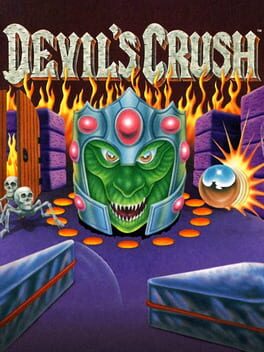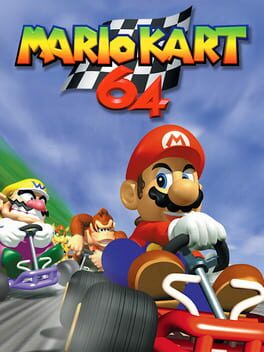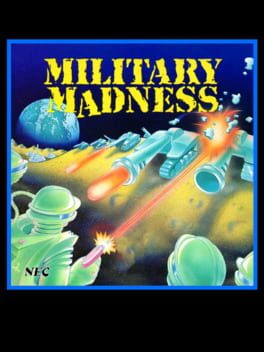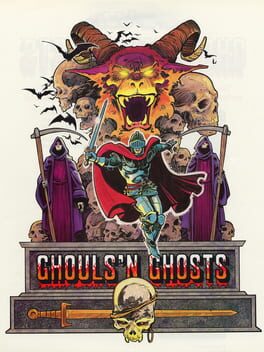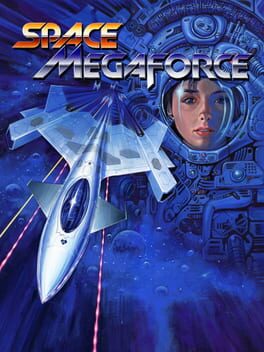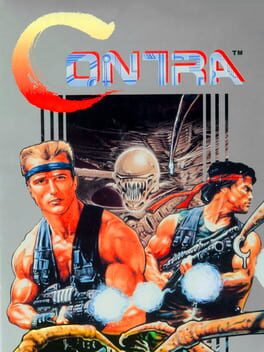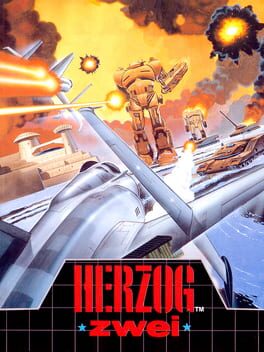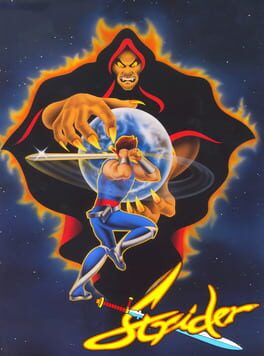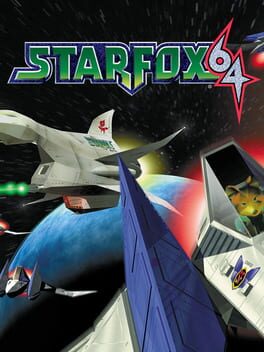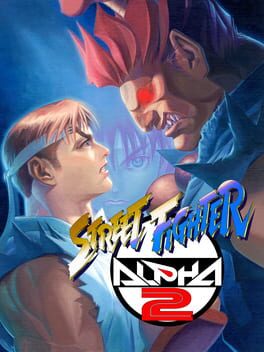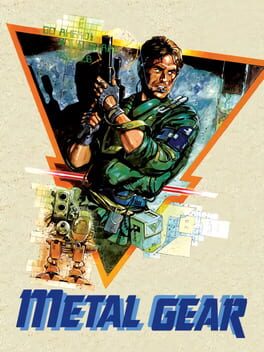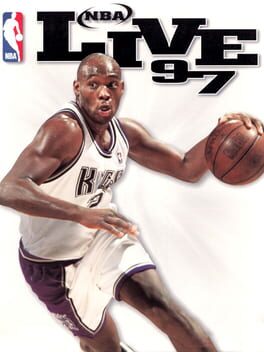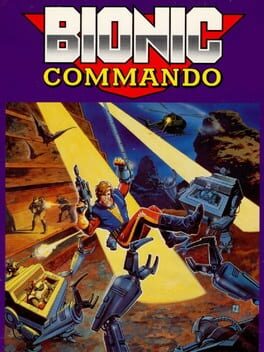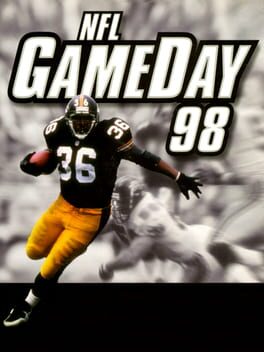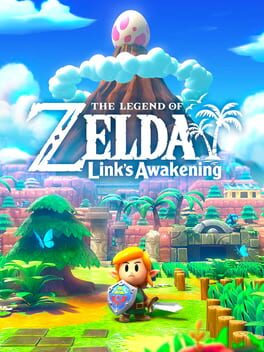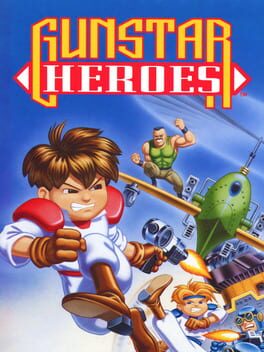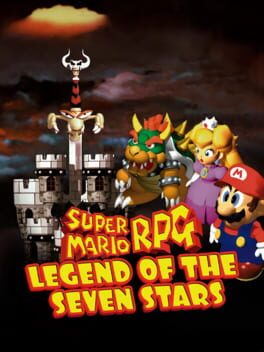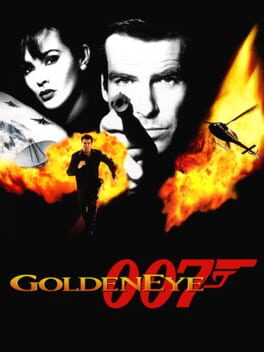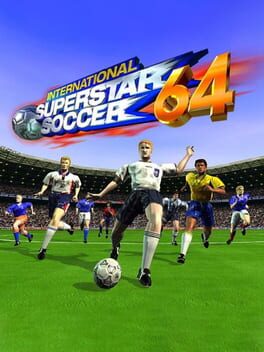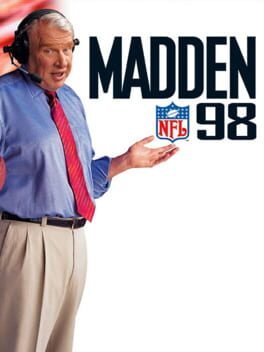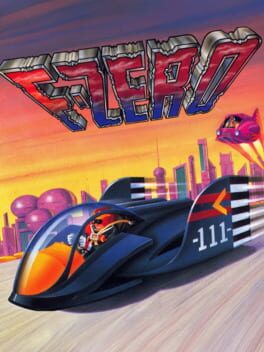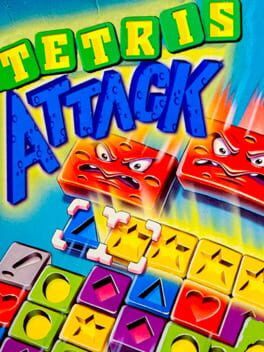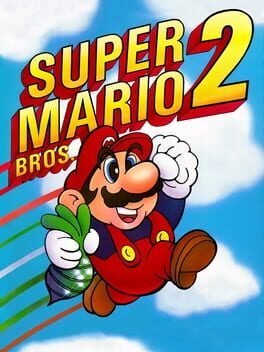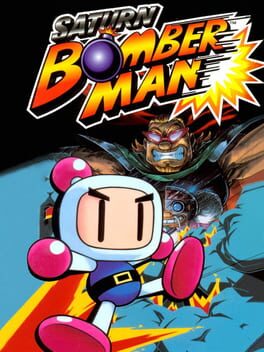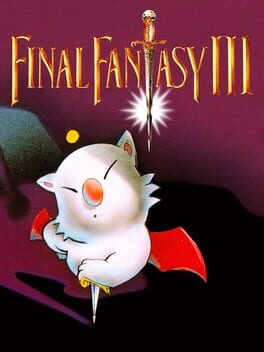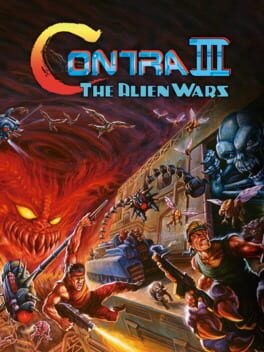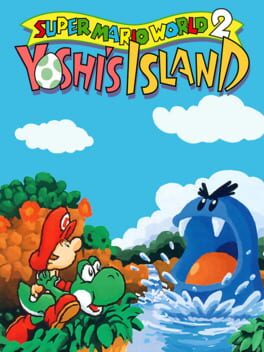Electronic Gaming Monthly 100 Best Games of All Time (EGM)
This list appeared in Issue 100 of the magazine in November 1997. They avoided choosing any PC (though some games were released on multiple platforms). They also had some breakouts featuring Top 10 lists from various game developers/producers that aren't included here along with Top 10 Worst Games, Top 10 Arcade Games (not many in the main list at all), Top 10 Revolutionary Games, and a Top 10 Readers' Picks. Overall, not a surprising list for the time period but there were some odd choices so it makes for an interesting list.
100 Games
100
98
97
96
95
94
93
91
89
78
76
75
73
69
68
67
63
61
55
54
52
51
45
44
43
42
41
39
35
34
33
18
17
Saturn
Sega, 1997
The game: You still get the same little Bomberman character who likes to blow up his friends (and enemies), but this time he's on the Saturn with up to 10 players at once. It’s as good as multiplayer gaming on the consoles gets.
It made the list because: If you have a copy of Bomberman and can rustle up at least four friends, there’s really no reason to play any other game—or even leave the house. It’s simply the greatest party game on the planet. And Saturn Bomberman is the best incarnation of this classic series yet. Sure, the Super NES and TurboGrafx-16 versions come close, but now 10 players can try to blow each other to bits in a Hi-res Mode that is incredibly hectic and fun (although it burns the eyes a bit; Eight-player Mode's a little easier on your vision). Plus, you get options for team play and the ability to lob bombs from the sidelines after you die. Revenge is a wonderful thing.
Coolest part: Realizing that you’ve trapped your opponent(s) with bombs just as the one-ton weights are about to clobber you from above. Yep, you can start panicking now.
Don’t you hate it when: You start trash-talking before a multiplayer game, only to start and trap yourself with two of your own damn bombs. D’oh!
Sega, 1997
The game: You still get the same little Bomberman character who likes to blow up his friends (and enemies), but this time he's on the Saturn with up to 10 players at once. It’s as good as multiplayer gaming on the consoles gets.
It made the list because: If you have a copy of Bomberman and can rustle up at least four friends, there’s really no reason to play any other game—or even leave the house. It’s simply the greatest party game on the planet. And Saturn Bomberman is the best incarnation of this classic series yet. Sure, the Super NES and TurboGrafx-16 versions come close, but now 10 players can try to blow each other to bits in a Hi-res Mode that is incredibly hectic and fun (although it burns the eyes a bit; Eight-player Mode's a little easier on your vision). Plus, you get options for team play and the ability to lob bombs from the sidelines after you die. Revenge is a wonderful thing.
Coolest part: Realizing that you’ve trapped your opponent(s) with bombs just as the one-ton weights are about to clobber you from above. Yep, you can start panicking now.
Don’t you hate it when: You start trash-talking before a multiplayer game, only to start and trap yourself with two of your own damn bombs. D’oh!
Super NES
Nintendo, 1994
The game: A traditional, Japanese RPG with more gameplay extras than any other title in gaming history. It has a super-long quest, multiple (and interchangeable) characters and a fun, menu-driven realtime combat system.
It made the list because: OK, where should we start? The graphics are rich and beautiful, as is the music. The cast is crammed with personality. The story line 15 magical and so involving that you may need to keep notes to follow its twists and turns. Heck, you even bat- tle dinosaurs! We could go on and on. Very few people can argue that FFIII isn’t a AAA title (we'd like to be in on that argument). It's the game that revolutionized the genre, while keeping old-school RPG fundamentals alive. It's also far more rewarding than FFII, and just a tad better than the awesome FFVII (FFIII offers more varied gameplay). We'll love this game forever.
Coolest parts: Trying to decide which characters are going adventuring with you and which are staying behind on the airship to twiddle their swords. And what about how awesome each character is? Some have Street Fighter moves (how's that for RPG innovation?), some can transform, some have special attacks, etc. And don't even get us started on the opera scene. Then there are the Chocobos, the Espers, the mechs...hoo boy—there are too many “coolest parts" to list.
Did you know: Final Fantasy Ill is actually part six in the series. It's only called FFIII because it’s the third one released in the States. And—you guessed it— Final Fantasy VII for the PlayStation is the sequel.
Nintendo, 1994
The game: A traditional, Japanese RPG with more gameplay extras than any other title in gaming history. It has a super-long quest, multiple (and interchangeable) characters and a fun, menu-driven realtime combat system.
It made the list because: OK, where should we start? The graphics are rich and beautiful, as is the music. The cast is crammed with personality. The story line 15 magical and so involving that you may need to keep notes to follow its twists and turns. Heck, you even bat- tle dinosaurs! We could go on and on. Very few people can argue that FFIII isn’t a AAA title (we'd like to be in on that argument). It's the game that revolutionized the genre, while keeping old-school RPG fundamentals alive. It's also far more rewarding than FFII, and just a tad better than the awesome FFVII (FFIII offers more varied gameplay). We'll love this game forever.
Coolest parts: Trying to decide which characters are going adventuring with you and which are staying behind on the airship to twiddle their swords. And what about how awesome each character is? Some have Street Fighter moves (how's that for RPG innovation?), some can transform, some have special attacks, etc. And don't even get us started on the opera scene. Then there are the Chocobos, the Espers, the mechs...hoo boy—there are too many “coolest parts" to list.
Did you know: Final Fantasy Ill is actually part six in the series. It's only called FFIII because it’s the third one released in the States. And—you guessed it— Final Fantasy VII for the PlayStation is the sequel.
Super NES
Konami, 1992
The game: Just like the original Contra, except a thousand times more intense.
It made the list because: Talk about sensory overload! This game has everything: huge Bosses, Mode 7 stages, ultradeep gameplay —all wrapped up in a beau- tifully atmospheric post-apocalyptic package. You get all the great control of the original, except now with new moves and the ability to carry and switch between two devastating weapons. But what really sets this game apart are its Bosses. No two can be toppled the same way. (Our favorite is the giant robot who smashes through the wall and lobs time bombs at you.)
Coolest part: Beating the game on normal or hard and watching the final Boss claw after you as you cling to an ascending helicopter gunship. And, of course, playing simultaneously with a buddy/sibling.
Where have | seen that before: Go back and watch the intro to Contra III: Alien Wars. Hmmm. Think maybe the folks behind Independence Day were fans of this game?
Konami, 1992
The game: Just like the original Contra, except a thousand times more intense.
It made the list because: Talk about sensory overload! This game has everything: huge Bosses, Mode 7 stages, ultradeep gameplay —all wrapped up in a beau- tifully atmospheric post-apocalyptic package. You get all the great control of the original, except now with new moves and the ability to carry and switch between two devastating weapons. But what really sets this game apart are its Bosses. No two can be toppled the same way. (Our favorite is the giant robot who smashes through the wall and lobs time bombs at you.)
Coolest part: Beating the game on normal or hard and watching the final Boss claw after you as you cling to an ascending helicopter gunship. And, of course, playing simultaneously with a buddy/sibling.
Where have | seen that before: Go back and watch the intro to Contra III: Alien Wars. Hmmm. Think maybe the folks behind Independence Day were fans of this game?
Super NES
Nintendo, 1995
The game: Super FX2-based side-scrolling platformer with the most amazingly unique graphics the Super NES has ever seen.
It made the list because: Yoshi's Island is as much а piece of art as a game. It’s like a huge, playable color- ing book. Unfortunately, the game couldn’t have been released at a worse time, going unnoticed by quite a few gamers. Trust us—Yoshi’s Island is the epitome of platform gaming, falling only inches behind Super Mario Bros. 3 as the best 2-D platformer of all time. Beautiful graphics, great gameplay, lots of bonus options and mini-games and well over 50 stages— what more could you ask for?
Coolest part: All of the “morphmation,” what Nintendo calls the stretching and warping of the game characters. Also, your mad dash to rescue Baby Mario after he’s been knocked off Yoshi.
Did you know: Yoshi's Island was in development for over three years before it was finally released. The game was redone almost from scratch at least once, but the end result shows that the time taken was certainly worth it.
Nintendo, 1995
The game: Super FX2-based side-scrolling platformer with the most amazingly unique graphics the Super NES has ever seen.
It made the list because: Yoshi's Island is as much а piece of art as a game. It’s like a huge, playable color- ing book. Unfortunately, the game couldn’t have been released at a worse time, going unnoticed by quite a few gamers. Trust us—Yoshi’s Island is the epitome of platform gaming, falling only inches behind Super Mario Bros. 3 as the best 2-D platformer of all time. Beautiful graphics, great gameplay, lots of bonus options and mini-games and well over 50 stages— what more could you ask for?
Coolest part: All of the “morphmation,” what Nintendo calls the stretching and warping of the game characters. Also, your mad dash to rescue Baby Mario after he’s been knocked off Yoshi.
Did you know: Yoshi's Island was in development for over three years before it was finally released. The game was redone almost from scratch at least once, but the end result shows that the time taken was certainly worth it.
Super Metroid
Nintendo, 1994
The game: It's a bigger and better version of the futuristic 8-Bit platform/action classic. Super Metroid has tons of levels, weapons and secrets.
It made the list because: Boy, if you've played Super Metroid, then you wouldn't ask why. From the exciting intro (with elements taken from the end of the original Metroid game) to the emotional ending, this 16-Bit sequel is simply stunning. This game takes skill, brains and technique to complete successfully, and you'll love every minute of it.
Coolest part: Seeing you-know-who come to your rescue in the end.
Did you know: You get to see Samus in her bathing suit if you beat the game in under three hours. Also, if you let the demo run unin- terrupted, you can see a slew of Samus' secret moves. A few of us didn't even notice the educational demo until after we beat the game. Better late than never, we guess.
Nintendo, 1994
The game: It's a bigger and better version of the futuristic 8-Bit platform/action classic. Super Metroid has tons of levels, weapons and secrets.
It made the list because: Boy, if you've played Super Metroid, then you wouldn't ask why. From the exciting intro (with elements taken from the end of the original Metroid game) to the emotional ending, this 16-Bit sequel is simply stunning. This game takes skill, brains and technique to complete successfully, and you'll love every minute of it.
Coolest part: Seeing you-know-who come to your rescue in the end.
Did you know: You get to see Samus in her bathing suit if you beat the game in under three hours. Also, if you let the demo run unin- terrupted, you can see a slew of Samus' secret moves. A few of us didn't even notice the educational demo until after we beat the game. Better late than never, we guess.
Super NES
Capcom, 1993
The game: The second SFII game to come out for the Super NES. This one added speed and playable Bosses to an already successful formula.
It made the list because: This is the best and newest Street Fighter that still plays like the classic. The series changed when it became “Super” and later “Alpha.” But many of us still like old-school SFII best, and Hyper Fighting is as good as old-school gets. Excellent control on an excellent translation of an excellent fighting game engine. Need we say more?
Coolest part: Playing this game for hours and hours until your thumb just couldn't take anymore.
Coolest code: Pressing Down, R button, Up, L but- ton, Y, B on the second player controller while the word "Turbo" scrolls across the opening screen. Now you can pick a 10-star speed setting. This is Hyper Fighting in the truest sense of the phrase.
Capcom, 1993
The game: The second SFII game to come out for the Super NES. This one added speed and playable Bosses to an already successful formula.
It made the list because: This is the best and newest Street Fighter that still plays like the classic. The series changed when it became “Super” and later “Alpha.” But many of us still like old-school SFII best, and Hyper Fighting is as good as old-school gets. Excellent control on an excellent translation of an excellent fighting game engine. Need we say more?
Coolest part: Playing this game for hours and hours until your thumb just couldn't take anymore.
Coolest code: Pressing Down, R button, Up, L but- ton, Y, B on the second player controller while the word "Turbo" scrolls across the opening screen. Now you can pick a 10-star speed setting. This is Hyper Fighting in the truest sense of the phrase.
Nintendo 64
Nintendo, 1996
The game: This adventure stars a familiar plumber in a very unfamiliar setting: breathtaking 3-D worlds. But you already knew that.
It made the list because: Take your pick: Its selling power put the N64 on the map. Its look and feel spawned a new era of 3-D adventure knockoffs (Banjo- Kazooie, anyone?). Its many secrets, shortcuts —and even its bugs—fueled the hype that made it one of the most-talked-about games ever, certainly one of the best-selling. But most importantly, its game- play showed that as far as 3-D gaming goes, we haven't seen anything yet. Just about everything in Super Mario 64 works flawlessly—the analog control, the puzzles, Mario’s new moves, the way most levels offer new challenges each time you visit them. Sure, the game has its tiny flaws, especially in the camera department. But мете talking about a title that’s as revolutionary today as the original Super Mario Bros. was back in the mid-'8os. It's not easy creating an entirely new genre, no matter how many times Shigeru Miyamoto has done it. And while Super Mario 64 isn’t quite as challenging or as fun as Mario 3, no gamer should die without playing—and beating —it first.
Coolest part: Seeing someone pull off the ultimate trick—reaching the roof of the castle before ever nabbing a single star. Trust us, it can be done.
А sleeper hit? Superstars — even digital ones—are just as “human” as you or me. Case in point: If you leave Mario alone for a minute or two, he'll sneak in a quick nap. Talk about your computer Al advancements!
Nintendo, 1996
The game: This adventure stars a familiar plumber in a very unfamiliar setting: breathtaking 3-D worlds. But you already knew that.
It made the list because: Take your pick: Its selling power put the N64 on the map. Its look and feel spawned a new era of 3-D adventure knockoffs (Banjo- Kazooie, anyone?). Its many secrets, shortcuts —and even its bugs—fueled the hype that made it one of the most-talked-about games ever, certainly one of the best-selling. But most importantly, its game- play showed that as far as 3-D gaming goes, we haven't seen anything yet. Just about everything in Super Mario 64 works flawlessly—the analog control, the puzzles, Mario’s new moves, the way most levels offer new challenges each time you visit them. Sure, the game has its tiny flaws, especially in the camera department. But мете talking about a title that’s as revolutionary today as the original Super Mario Bros. was back in the mid-'8os. It's not easy creating an entirely new genre, no matter how many times Shigeru Miyamoto has done it. And while Super Mario 64 isn’t quite as challenging or as fun as Mario 3, no gamer should die without playing—and beating —it first.
Coolest part: Seeing someone pull off the ultimate trick—reaching the roof of the castle before ever nabbing a single star. Trust us, it can be done.
А sleeper hit? Superstars — even digital ones—are just as “human” as you or me. Case in point: If you leave Mario alone for a minute or two, he'll sneak in a quick nap. Talk about your computer Al advancements!
Super NES
Nintendo, 1992
The game: A sequel to the 8-Bit action-RPG series, with better graphics, new tools and weapons, and more worlds to explore.
It made the list because: A Link to the Past takes every- thing that made the original Zelda such a classic and supercharges the entire package. The graphics are improved tenfold over the original, and the levels — especially outdoors—are huge (remember the forest maze?). The environments are also much more inter- active than in previous Zeldas (remember lighting the torches in the dun- geons with your lantern?) Part three of the Zelda series is clearly the best action-RPG ever made.
Coolest part: Remember seeing the rain for the first time? Remember thinking how awesome your Super Nintendo is when you saw that rain?
Did you know: In our reader poll for top games of all time, Zelda 64 received a dozen votes. Peculiar, would- n't you say, for a game that isn't even out in Japan yet? We're sure the game's gonna be awesome, too, but let's not jump the gun yet.
Nintendo, 1992
The game: A sequel to the 8-Bit action-RPG series, with better graphics, new tools and weapons, and more worlds to explore.
It made the list because: A Link to the Past takes every- thing that made the original Zelda such a classic and supercharges the entire package. The graphics are improved tenfold over the original, and the levels — especially outdoors—are huge (remember the forest maze?). The environments are also much more inter- active than in previous Zeldas (remember lighting the torches in the dun- geons with your lantern?) Part three of the Zelda series is clearly the best action-RPG ever made.
Coolest part: Remember seeing the rain for the first time? Remember thinking how awesome your Super Nintendo is when you saw that rain?
Did you know: In our reader poll for top games of all time, Zelda 64 received a dozen votes. Peculiar, would- n't you say, for a game that isn't even out in Japan yet? We're sure the game's gonna be awesome, too, but let's not jump the gun yet.
Super NES
Nintendo, 1990 (Original), 1993 (All-Stars Version)
The game: The third chapter in the insanely successful Super Mario Bros. series, it's also the single best plat- form game of all time (as well as the second best game of all time).
It made the list because: Super Mario Bros. 3 took the series back to its roots, but expanded upon the original game in every way imaginable. No other game since has been able to recapture the spirit of adventure and enchantment found in Mario 3. There are dozens of worlds to explore, tons of secrets to find, minigames up the wazoo, perfect gameplay and special animal cos- tumes that grant never-before-seen powers. What, for instance, could be better than batting turtles with your tail after nabbing the Leaf power-up? Or how about sprinting and launching into the air for a few seconds of flight to grab those hard-to-reach coins? And for the first time, the levels were spread out on an overworld map that sprawled in every direction (but watch out for the roving Hammer Brothers!). The entire game just cries out to be explored! Best of all, the All-Stars version on the Super NES is like a dream come true— everything is re-created perfectly, but with gorgeous graphics and better sounds.
Coolest part: Using the Whistle from Zelda to get to the hidden Warp Zones!
Just a reminder: We're not including compilation games on our Top 100, or Super Mario All-Stars would be the clear-cut number- one game of all time. It's a sin not to own this king of compilations!
Nintendo, 1990 (Original), 1993 (All-Stars Version)
The game: The third chapter in the insanely successful Super Mario Bros. series, it's also the single best plat- form game of all time (as well as the second best game of all time).
It made the list because: Super Mario Bros. 3 took the series back to its roots, but expanded upon the original game in every way imaginable. No other game since has been able to recapture the spirit of adventure and enchantment found in Mario 3. There are dozens of worlds to explore, tons of secrets to find, minigames up the wazoo, perfect gameplay and special animal cos- tumes that grant never-before-seen powers. What, for instance, could be better than batting turtles with your tail after nabbing the Leaf power-up? Or how about sprinting and launching into the air for a few seconds of flight to grab those hard-to-reach coins? And for the first time, the levels were spread out on an overworld map that sprawled in every direction (but watch out for the roving Hammer Brothers!). The entire game just cries out to be explored! Best of all, the All-Stars version on the Super NES is like a dream come true— everything is re-created perfectly, but with gorgeous graphics and better sounds.
Coolest part: Using the Whistle from Zelda to get to the hidden Warp Zones!
Just a reminder: We're not including compilation games on our Top 100, or Super Mario All-Stars would be the clear-cut number- one game of all time. It's a sin not to own this king of compilations!
1
Multiplatform
Created by Alexey Pajitnov in 1988
The game: Spend half your life forcing six differently shaped blocks into neat rows at the bottom of a well. Spend the other half waiting for the straight, skinny block so you can score a "Tetris.”
The game: Spend half your life forcing six differently shaped blocks into neat rows at the bottom of a well. Spend the other half waiting for the straight, skinny block so you can score a “Tetris.”
It made the list because: Let’s forget for a sec’ that до million people worldwide play Tetris. Let’s forget that— for most people—it’s the single most addicting game on the planet. Let’s forget that it paved the way for today’s most exciting, flashy, combo-ridden puzzle games. Tetris is as pure as a video game can get. It’s just you, seven blocks and a well. Your goal is incredibly simple: line up the blocks in rows and make them go away, preferably four rows at a time, to make room for the never-ending rain of blocks from above. When the right blocks come your way—and if you can manage to avoid mistakes—the game can be relaxing. One mislaid block, however, and your duties switch to damage control, a mad, panicky dash to clean up your mess or die. No, Tetris doesn't look, sound or play like any other video game. Nevertheless, it's complete gaming bliss.
When it came time to pick the best version of Tetris, we found ourselves in a pickle. First, we fired up the old Tengen version for the NES (you remember—the one Nintendo filed a lawsuit over because Tengen cracked the Big N's lockout chip?). We were really, really hoping this version was as good as we remembered. After all, wouldn't it be cool if the greatest game of all time was an outlaw? Alas, the Tetris packed with Dr. Mario for the Super NES plays a little better (it's easier to control the speed of your blocks" descent, and the Two- player Mode is more fun than the one in Tengen's). Still, many on the staff argued for the Game Boy version. You can take it anywhere and still play two-player games with the link cable. After hours of bickering, we finally realized that Tetris pretty much plays fine no matter which system you use to
rock your puzzle blocks, whether it be a PC, con- 5 2 sole, Game Boy or a $10 keychain.
Coolest part: Knowing that whenever you get bored with the latest 3-D adventure or shooter or side-scroller or RPG or sim, Tetris -- and its seven blocks -- will be waiting for you, always.
Did you know: The greatest video game of all time was never originally intended to be a video game at all. When Alexey Pajitnov invented Tetris, his intention was merely to create a mental exercise for fellow Russian scientists.
Created by Alexey Pajitnov in 1988
The game: Spend half your life forcing six differently shaped blocks into neat rows at the bottom of a well. Spend the other half waiting for the straight, skinny block so you can score a "Tetris.”
The game: Spend half your life forcing six differently shaped blocks into neat rows at the bottom of a well. Spend the other half waiting for the straight, skinny block so you can score a “Tetris.”
It made the list because: Let’s forget for a sec’ that до million people worldwide play Tetris. Let’s forget that— for most people—it’s the single most addicting game on the planet. Let’s forget that it paved the way for today’s most exciting, flashy, combo-ridden puzzle games. Tetris is as pure as a video game can get. It’s just you, seven blocks and a well. Your goal is incredibly simple: line up the blocks in rows and make them go away, preferably four rows at a time, to make room for the never-ending rain of blocks from above. When the right blocks come your way—and if you can manage to avoid mistakes—the game can be relaxing. One mislaid block, however, and your duties switch to damage control, a mad, panicky dash to clean up your mess or die. No, Tetris doesn't look, sound or play like any other video game. Nevertheless, it's complete gaming bliss.
When it came time to pick the best version of Tetris, we found ourselves in a pickle. First, we fired up the old Tengen version for the NES (you remember—the one Nintendo filed a lawsuit over because Tengen cracked the Big N's lockout chip?). We were really, really hoping this version was as good as we remembered. After all, wouldn't it be cool if the greatest game of all time was an outlaw? Alas, the Tetris packed with Dr. Mario for the Super NES plays a little better (it's easier to control the speed of your blocks" descent, and the Two- player Mode is more fun than the one in Tengen's). Still, many on the staff argued for the Game Boy version. You can take it anywhere and still play two-player games with the link cable. After hours of bickering, we finally realized that Tetris pretty much plays fine no matter which system you use to
rock your puzzle blocks, whether it be a PC, con- 5 2 sole, Game Boy or a $10 keychain.
Coolest part: Knowing that whenever you get bored with the latest 3-D adventure or shooter or side-scroller or RPG or sim, Tetris -- and its seven blocks -- will be waiting for you, always.
Did you know: The greatest video game of all time was never originally intended to be a video game at all. When Alexey Pajitnov invented Tetris, his intention was merely to create a mental exercise for fellow Russian scientists.
